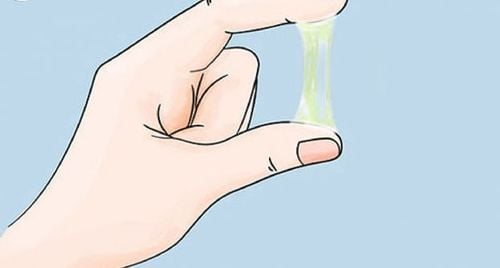This is an automatically translated article.
Tummy-sleeping is essential from the first days after birth to help babies grow strong. Experts have found that babies who don't spend time on their stomachs are more likely to experience delays in motor skills than babies who lie on their stomachs every day.
1. What is prone lying?
Tummy time (English name is Tummy time) refers to the baby's tummy position when awake and supervised, tummy time can help baby develop strong neck and shoulder muscles and promote the motor skills. Tummy time can also prevent a flat back of your baby's head known as positional plagiocephaly.
If the baby's head is left in the same position for a long time, the skull fragments can move causing the back of the head to flatten. While you should put your baby on his or her back to sleep to reduce the risk of sudden infant death syndrome (SIDS), tummy time gives babies a chance to experience a different position. This can help reduce the risk of a flat head. Tummy time can also help your baby build the strength he needs to sit up, roll over, crawl, and walk.

Until 1992, when the American Academy of Pediatrics (AAP) started encouraging parents to put babies to sleep on their backs to reduce the risk of sudden infant death syndrome (SIDS), before that, most Newborns all lie on their stomachs and are used to it. Today, most babies are much more comfortable lying on their backs to spend time sleeping (not to mention spending time in car seats, swings, and bouncers).
So if your baby seems to have colic when lying on his stomach, no wonder. It's not just a matter of the baby not getting used to the tummy position, but it's also physically uncomfortable. It's hard for your baby to hold his head up when he's on his stomach, and he can't see much of the bottom. Children may even feel abandoned. That's why some babies don't like tummy time.
Trắc nghiệm: Sự phát triển tinh thần, vận động của bé thế nào là đúng chuẩn?
Khi nào bé biết nói, biết hóng chuyện hay biết cầm cốc là "đúng chuẩn"? Điểm xem bạn biết được bao nhiêu mốc phát triển tinh thần, vận động "đúng chuẩn" của bé nhé!The following content is prepared under supervision of Thạc sĩ, Bác sĩ y khoa, Ma Văn Thấm , Nhi , Phòng khám Đa khoa Quốc tế Vinmec Dương Đông(Phú Quốc)
2. Is it okay for babies to lie on their stomachs?
Taking time to wake up on your stomach has many benefits for your baby. Tummy time:
Helps prevent flatness in the back of your baby's head. Allow your child to work muscles that are different from those he uses in his back. By doing push-ups, your child will develop the muscles in his arms, shoulders, upper back, and neck that will eventually be able to lift his head. Set the stage for motor skills such as reaching, rolling, sitting up, and crawling.
3. When should baby start tummy tuck?

Tummy time should start right after birth as part of the daily routine. You can start with 1 to 2 minutes a few times a day. Over time, you can gradually increase it to 10-15 minutes, several times a day. You can start by placing your baby horizontally on your lap. As your baby gets older, you can place him on a mat on a flat floor to play.
Make sure your baby is not hungry or tired when you put him on his stomach. Babies should not be placed on their stomachs when they are hungry or sick as this can cause discomfort. Wait about an hour after your baby has eaten to avoid vomiting or acid reflux.
When your baby starts to cry, even if it's only for a minute on his stomach, try to calm him down a little longer by talking to him or playing with him.
A baby's tolerance for tummy time can be gradually increased with experience and with a little comfort from the parents. And many babies are more prone to tummy time when they can begin to roll over and then they can roll over on their own to lie on their stomach.
4. How to increase tummy time

Have the baby lie on his or her stomach on a flat surface, facing you or the child lying next to you. To prolong tummy time, talk to your baby and offer him a favorite toy. Put a mirror that is hard to break in front of your baby so he can see his own face and keep him entertained. You can change the position, from in front of the baby to the sides.
Lure your baby with attractive toys. Spread the toy around the child in a circle so that the child has easy access to the toy and help him develop all the different muscles so that he can eventually sit up, crawl and walk.
Support the baby by placing a nursing pillow under the baby's chest and arms if the baby initially resists or doesn't like tummy time.
5. What should parents do when the child does not like to lie on his stomach?
At first, a lot of babies don't like to lie on their stomach, but most begin to adapt and in this case prefer to lie on their stomach once they have built the necessary muscles to hold their head up. While waiting for your baby to enjoy tummy time, there are a few things you can do to help him get used to tummy time:
Try it out for short periods of time and several times a day. At first, lying on your stomach only needs 1 to 2 minutes at a time. With such exercise, it will help the baby to relieve colic. Switch positions. Changing the scene around the tummy tuck is sometimes enough to keep the tummy time longer. Baby foot massage. Massaging your baby's feet can encourage longer tummy time. Let other children play with your baby while he is on his stomach. Children can lie down on the floor more easily than adults, and they have lots of fun games to get other kids to play with. However, you just need to make sure to keep a close eye on both children.

Newborns in general are prone to respiratory diseases, respiratory infections and gastrointestinal infections if they are introduced to solid foods early or the storage and preparation of milk is not guaranteed. To protect children's health, parents should do well to exclusively breastfeed their babies for the first 6 months (if possible) and vaccinate on schedule. As soon as a child shows symptoms such as anorexia, fatigue, and crying, the child needs to go to the hospital to be consulted by a specialist for monitoring and treatment. The pediatric department at Vinmec International General Hospital is the address for receiving and examining diseases that infants and young children are susceptible to: viral fever, bacterial fever, otitis media, pneumonia in children. With a system of facilities, modern medical equipment, sterile space, minimizing the impact as well as the risk of disease spread, Vinmec will bring satisfaction to customers. and is highly appreciated by industry experts with:
Gathering a team of leading pediatricians: including leading experts with high professional qualifications (professors, associate professors, doctors, Master's degree), experienced, worked at major hospitals such as Bach Mai, 108.. The doctors are all well-trained, professional, conscientious, knowledgeable about young psychology. In addition to domestic pediatric specialists, the Department of Pediatrics also has the participation of foreign experts (Japan, Singapore, Australia, USA) who are always pioneers in applying the latest and most effective treatment regimens. . Comprehensive services: In the field of Pediatrics, Vinmec provides a series of continuous medical examination and treatment services from Newborn to Pediatric and Vaccine,... according to international standards to help parents take care of their baby's health from birth to childhood. Advanced techniques: Vinmec has successfully deployed many specialized techniques to make the treatment of difficult diseases in pediatrics more effective: neurosurgery - skull, stem cell transplant blood in cancer treatment. Professional care: In addition to understanding children's psychology, Vinmec also pays special attention to the children's play space, helping them to play comfortably and get used to the hospital's environment, cooperate in treatment, improve the efficiency of medical treatment.
Please dial HOTLINE for more information or register for an appointment HERE. Download MyVinmec app to make appointments faster and to manage your bookings easily.
References: babycenter.com, mayoclinic.org, whattoexpect.com
SEE MORE
When will the fontanelle be full? Puffy fontanelles in infants: What you need to know Guidelines for calcium supplementation for nursing babies














